The wildlife in Panama is amazing. In our travels around the country, we saw many monkeys, slews of sloths, and a lot of birds and marine life. Saw? We got close to lots of cool animals. Here’s what we saw and where we saw them.
Monkeys Everywhere
We saw – and heard – monkeys all over the Caribbean side of Panama. Even in populated areas, we communed with monkeys, like in Bocas del Toro when the howlers were hanging in the trees right next to the road.
We spotted monkeys in Linton Bay, Shelter Bay, in Bocas del Toro and the Chagres River. The most common by far are the howler monkeys. They roar, but they are tiny and cute, very different than they sound! I miss the sound of these animals. Howlers were so common on the Caribbean side: at Shelter, Linton, and Rio Chagres, their monkey roars almost became the soundtrack to our lives there.

If you’re at Shelter Bay, hike up the hill past the boatyard and look for monkeys around the old buildings. We saw capuchins, the white faced monkeys, a couple of times when we walked up there.

Isla Linton, the small island in Linton Bay, is known as Monkey Island. But be forewarned, they are territorial and will attack! Do not exit your boat near this island. We dinghied over and took photos but the monkeys approached – looking for food, probably. These monkeys were the biggest we’ve seen, most likely the spider monkeys.

Sloths
I love sloths! They’re so cute, with their smiling faces and cool moves. They look like they do nothing but they are always moving, just slowly. Our exposure to sloths in Bocas del Toro at Red Frog was a highlight of our Panama wildlife encounters!

How happy was I when we found more sloths near Playita on the Pacific side of Panama.

Just because they are so cute, here are more photos of the sloths from Bocas del Toro, mama and baby.

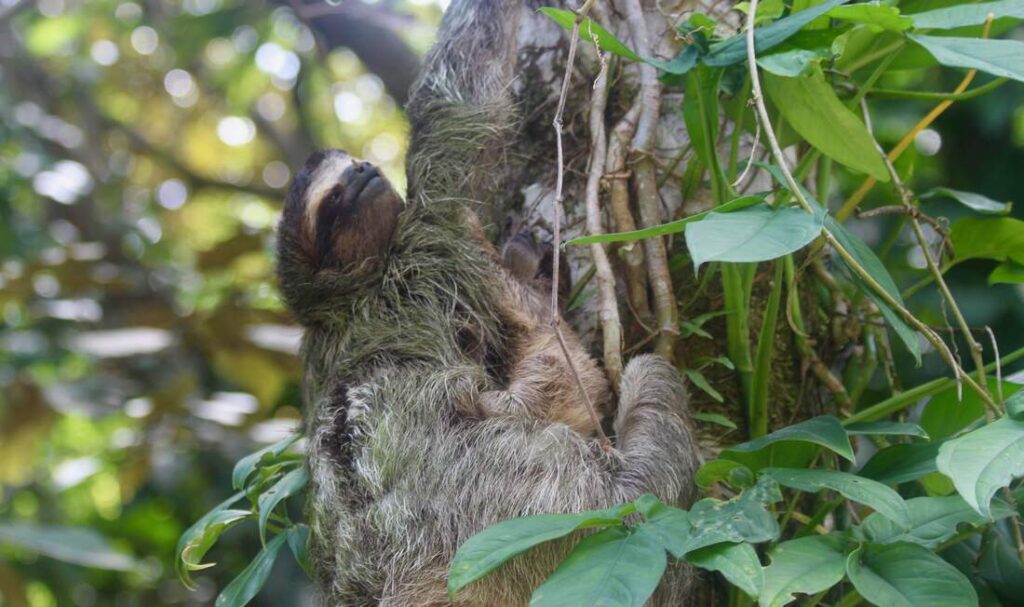

Dolphins
Bocas del Toro was the the best spot in Panama for us to spot dolphins. They swam around our anchorage and even the marina at Red Frog so often that tour boats were usually there looking for them.

Plus, visiting dolphins were one of the few bright spots on our passage back to Shelter Bay. Any sane people love dolphins so please do what you can to protect them!

Rays
One of our most memorable recent experiences in Panama was when we sailed back from Las Perlas and encountered massive schools of southern sting rays. They were leaping out of the water all around us!
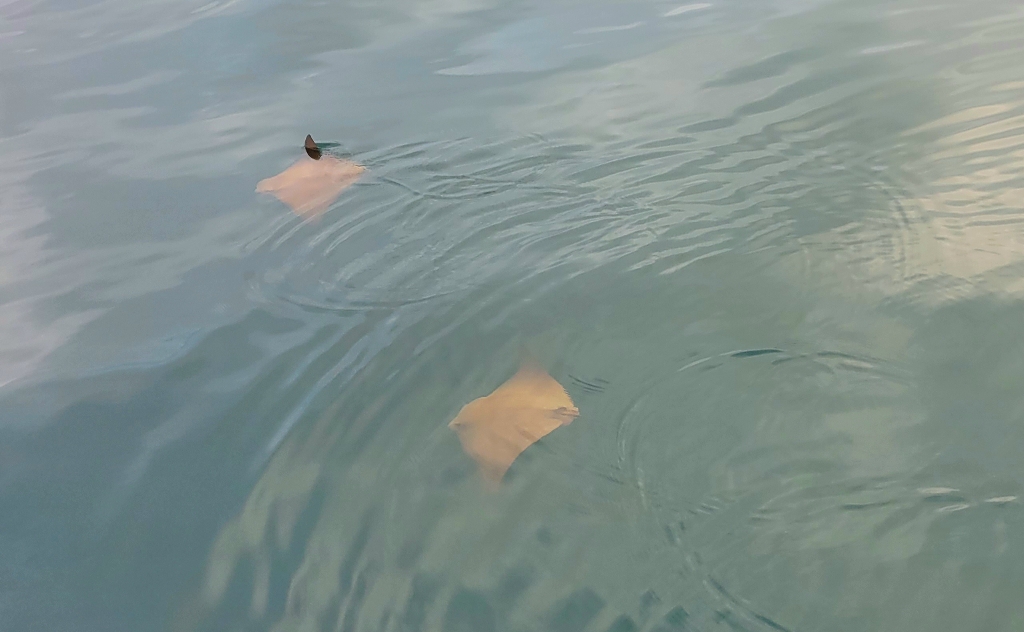
Thousands of rays alternated flying out of the sea, and slapping back down. We heard those slaps over and over and enjoyed every minute watching these beautiful animals!
Panama Wildlife: Agoutis and Coatis
Panama is known for sloths and monkeys, but it’s home to other wild creatures you may not have heard of before. We saw coatis and agoutis, two different rodents, near roads and in jungle on the Caribbean side of the country.
Agoutis are like big rats. They didn’t approach us; nor did they appear scared of us. They just stayed in the brush foraging food. I would say they were more timid than coatis because I couldn’t get a good photo of them.
Coatis are more like raccoons or possums with big thick tails and long snouts. We saw them in the jungle and crossing the road near Shelter Bay.


Armadillo
On one of our walks in Shelter Bay, we spotted an armadillo digging alongside the road. It was cool to see one of these weird looking animals in the wild! You can see it’s striped tail in the video and I got a better shot below.

Wildlife in Panama: Red Frog
I can’t ignore the tiny but beautiful – and deadly – red frog of Bocas del Toro. I thought this frog was going to be much bigger than it was. We often found them lying in tiny wet spots on leaves after it rained.


So Many Birds
Panama is a paradise for bird watchers, and even amateurs like us who don’t know the names of the birds. The diversity is pretty impressive, with seabirds and toucans and yes, even Canadian geese.
birds in the san blas
We saw a toucan in the San Blas and will never forget getting so close to one these colorful tropical birds.

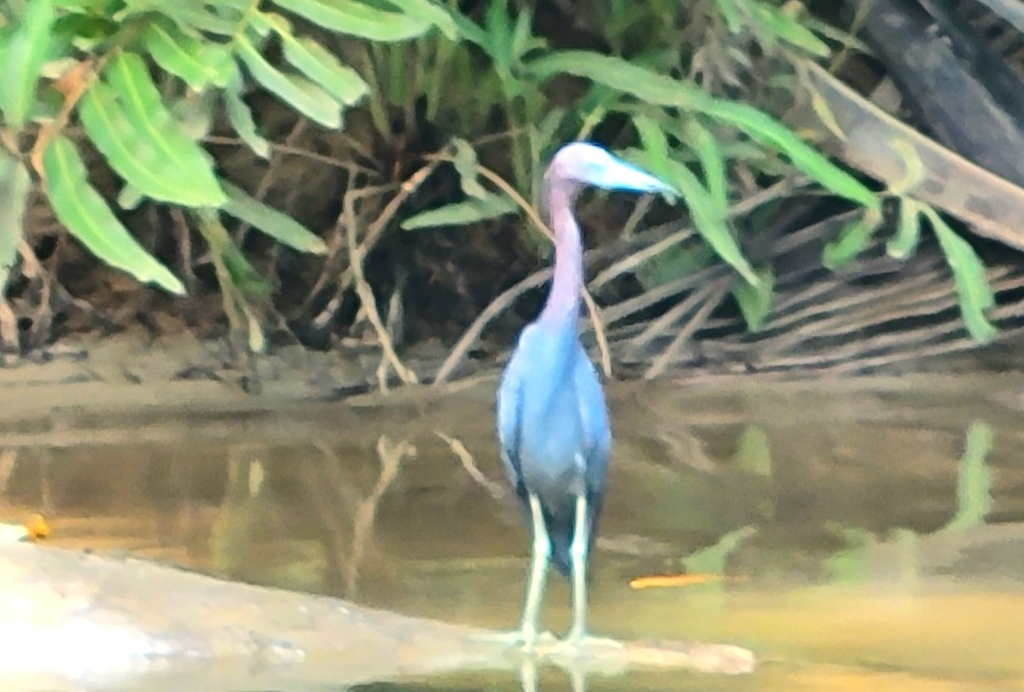

birds in las perlas, panama
Outside of the San Blas, the best places we visited for spotting bird life were Rio Chagres and Las Perlas/Pearl Islands. We saw many huge flocks flying in the air, roosting in trees, and feeding in the waters around the Pearl Islands.

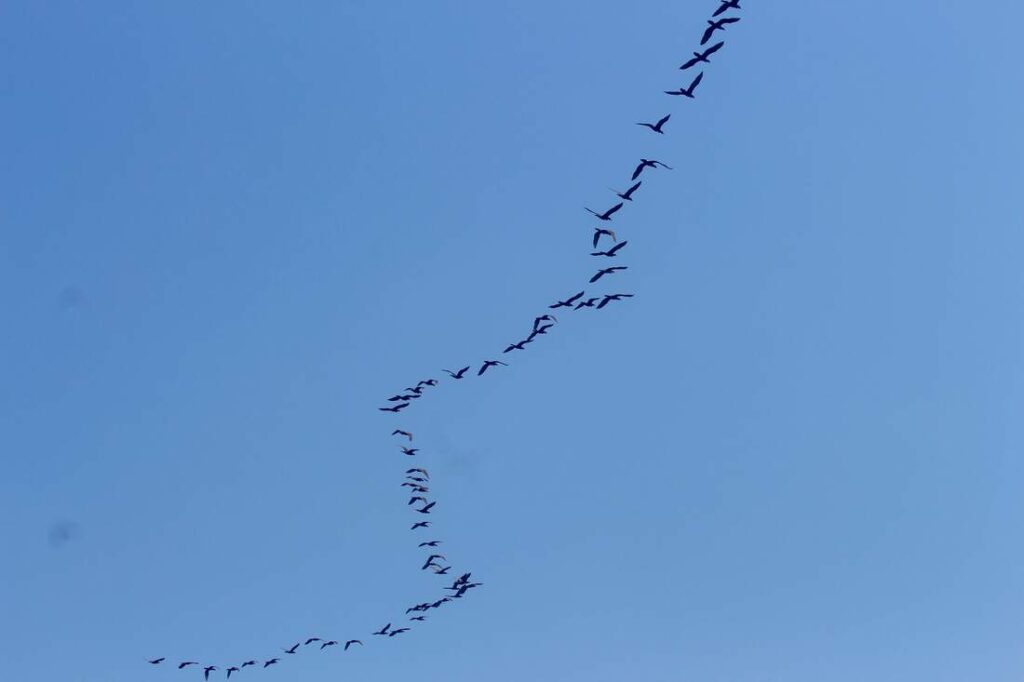

rio chagres bird life
I don’t have a lot to say about these birds, except that they were a nice part about anchoring in Panama. We were away from towns and people and just got to soak up nature and the outdoors and commune with birds.


We are lucky to live on our boat in tropical climates and have wild animals approach and even visit. Plus, to snorkel or hike and get close to these creatures in their natural habitats is wonderful. Interacting with wildlife in Panama, from sloths to dolphins to coatis, is a highlight of this life!
We Call them Trash Pandas in Toronto
Yes, raccoons live in Panama, at least on the Pacific side near Panama City. They loiter around the common areas of the marina, and jump in the garbage just like back home. These guys are quite a bit smaller than their North American counterparts. They still get way too close for comfort though, coming right up to the table where people are eating. No thank you!


Panama is a wild place with a lot of diversity. Being the bridge between North and South America means a variety of animals of all sorts. We’re glad we got to experience so much of Panama’s beauty and wildlife.
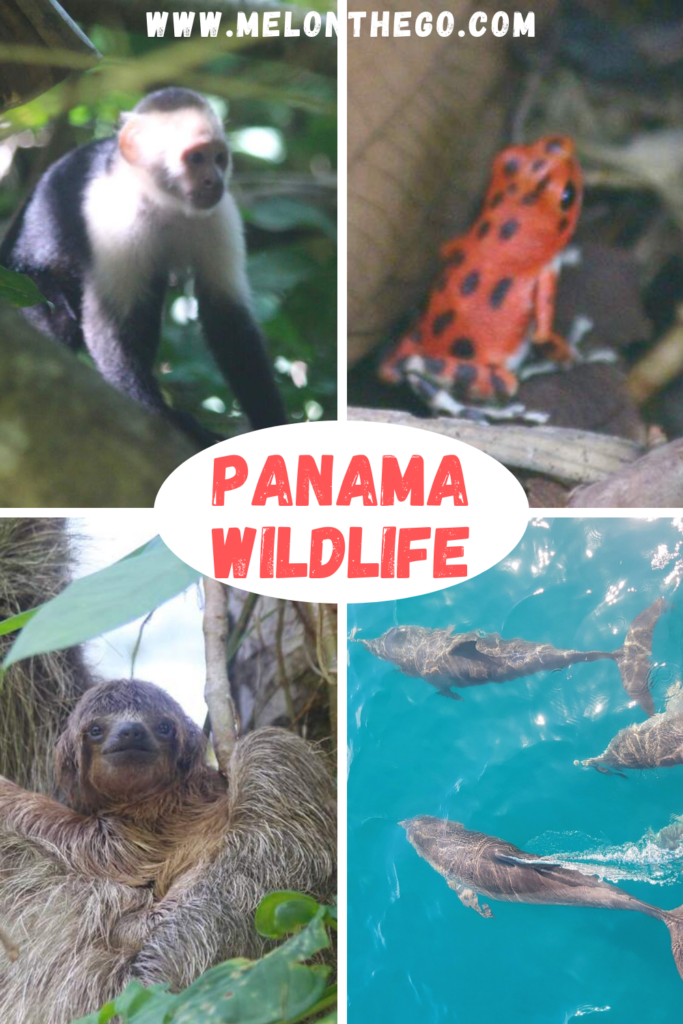






So cool! I love the dolphins and sloths. Those raccoons are so cute too, but I get that they can be menaces to garbage and recycling!
Oh, those sloths are just adorable!!! I can see why they were a trip highlight. Great pictures and content, thanks for sharing.
Love the video clip of the rays in the air – how cool!
Getting to interact with these incredible creatures in their natural habitat is so amazing!
Wow, lots of wildlife here in Panama, I would love to go and see all these animals ????
Squeee you must have had so much fun seeing all these!! I would LOVE to see the sloth and the coati with their cute fuzzy faces! The red frog is really cool too!
You missed the whales sighting and baby sea turtles going to the beach… At playa Venao You can adopt a baby sea turtle that you would have the opportunity to take to the sea shore and help it to go to the sea. They run a program called save the turtles Venao that the survival rate of sea turtles once the mummy lay the eggs on the beach and the little turtle reach the water has increased a 95% all the adoptions an donations are used to keep running the program (it have been created by the community of playa Venao) to keep them save.
Thanks for your note, Constanza. To see the little turtles would be an amazing experience! Hopefully, one day, and how great for programs like the one at Playa Venao!